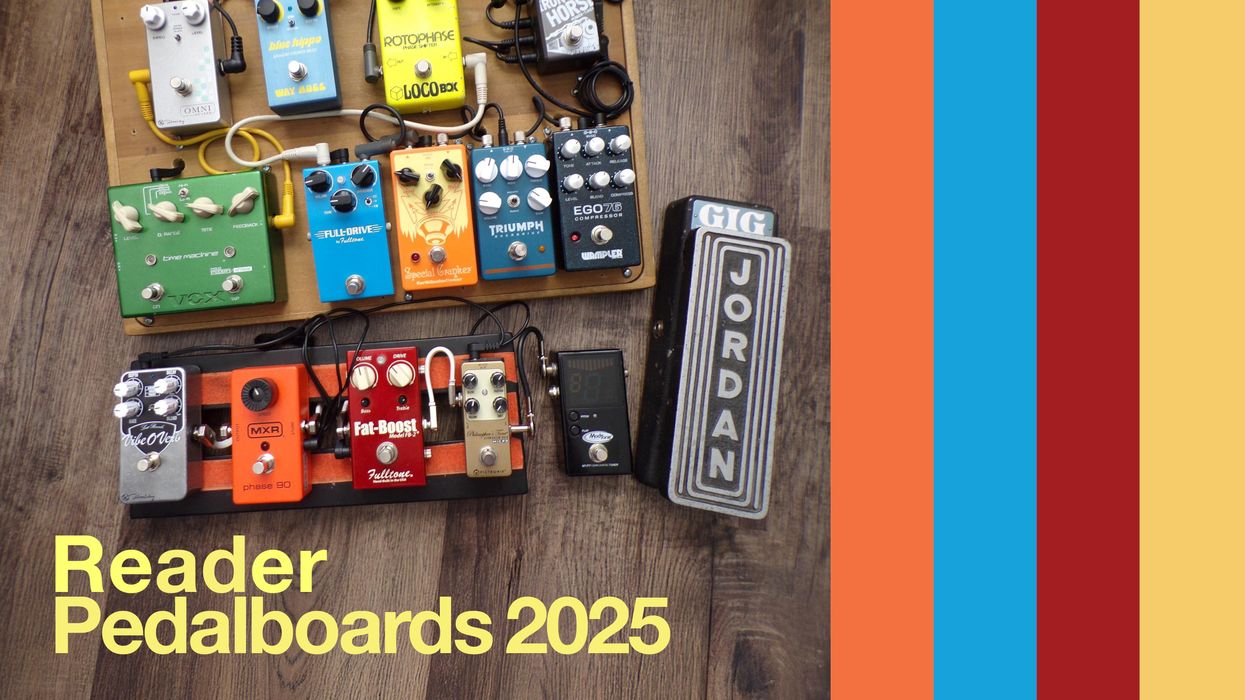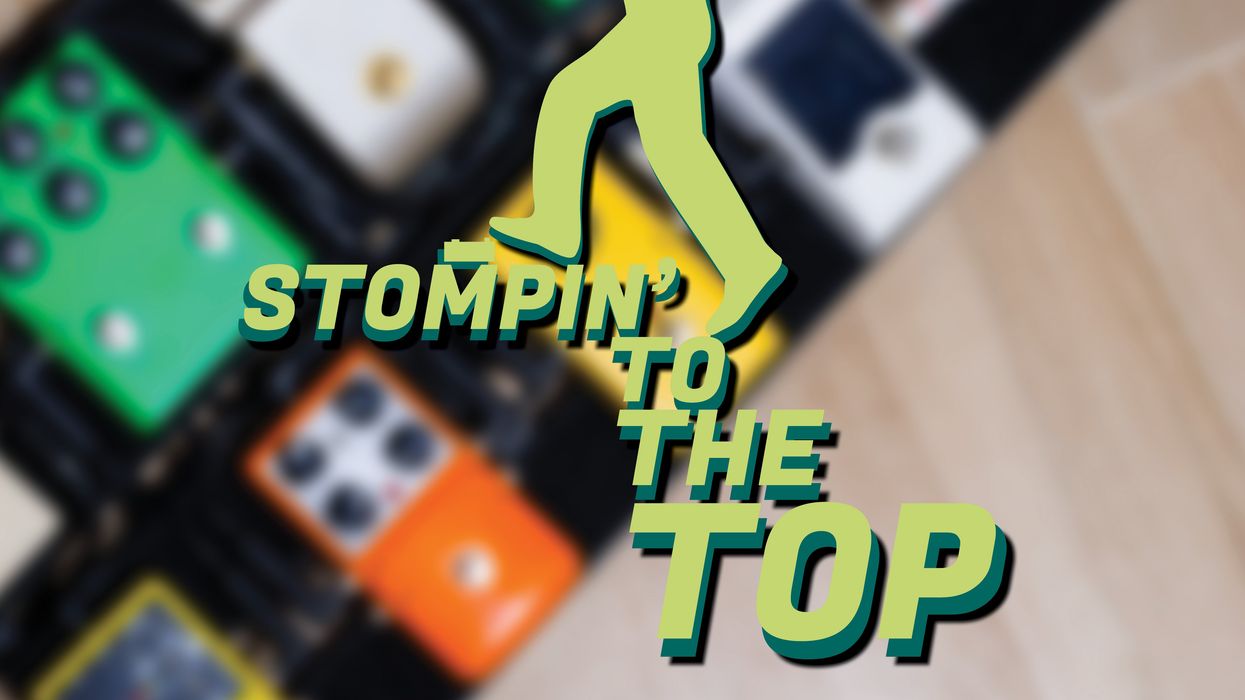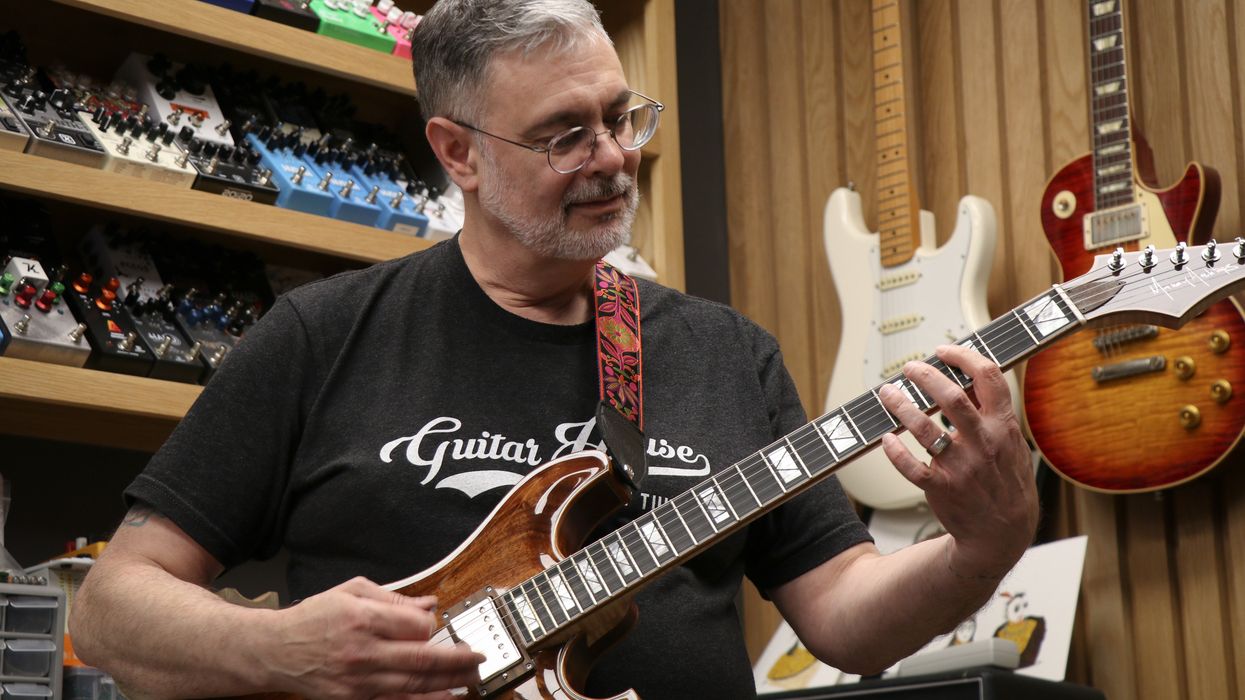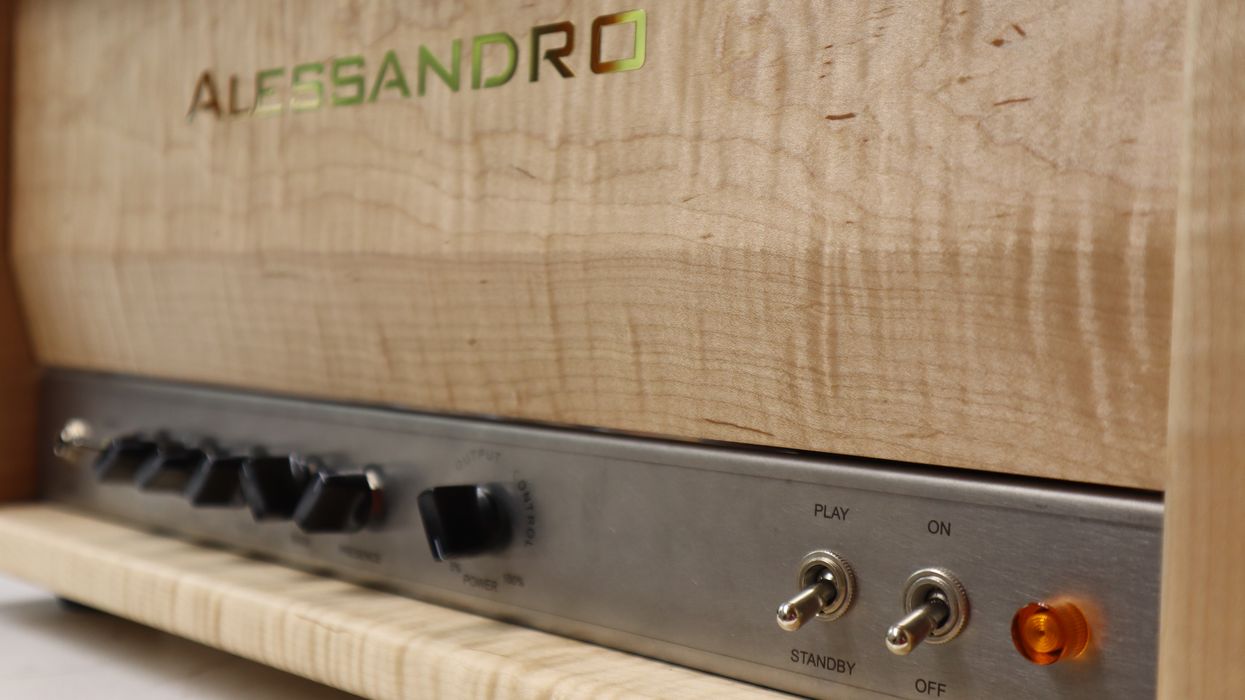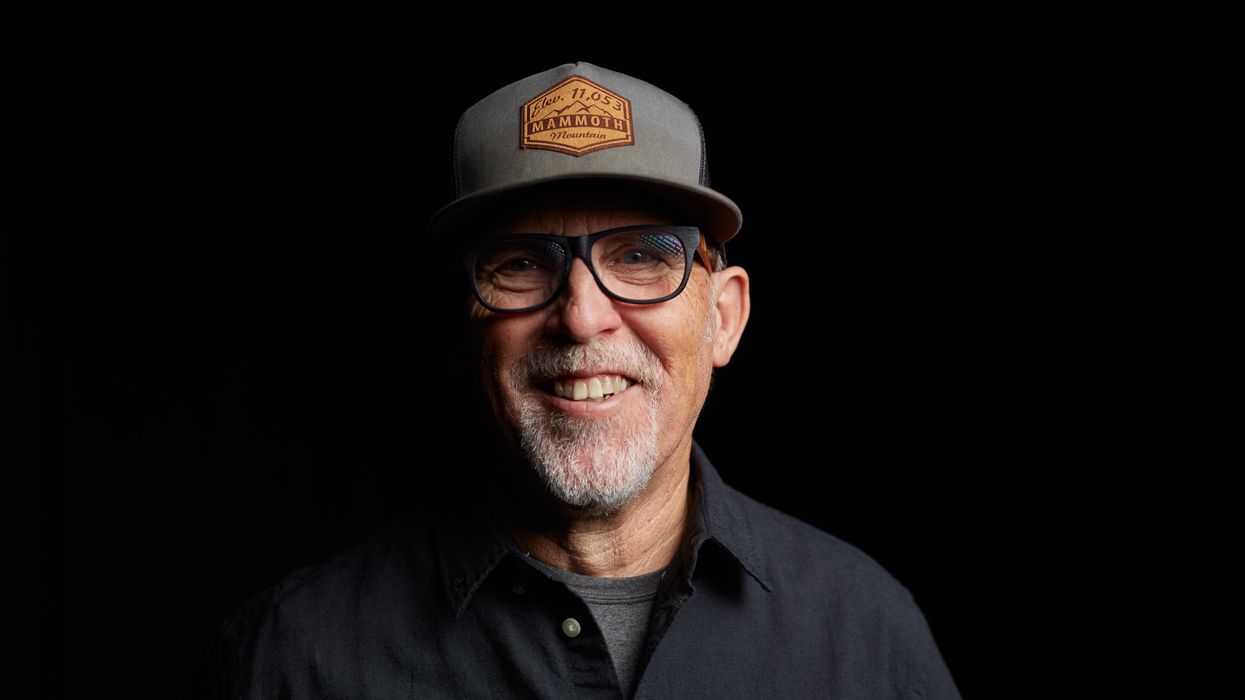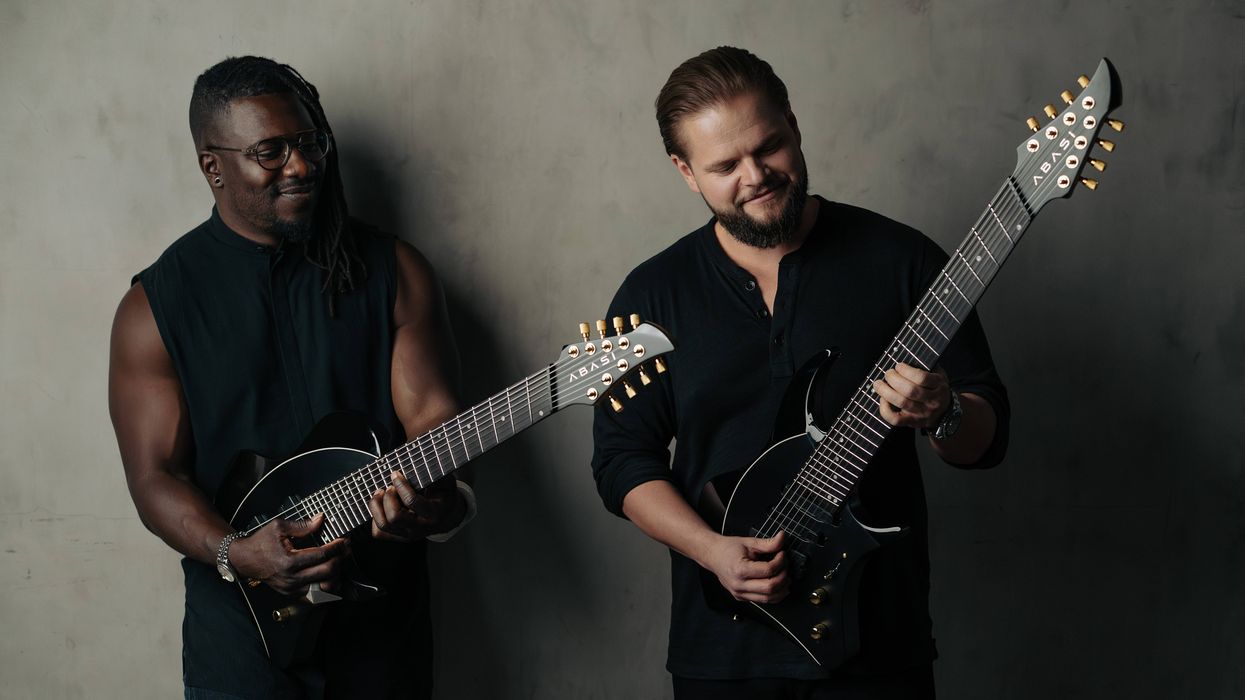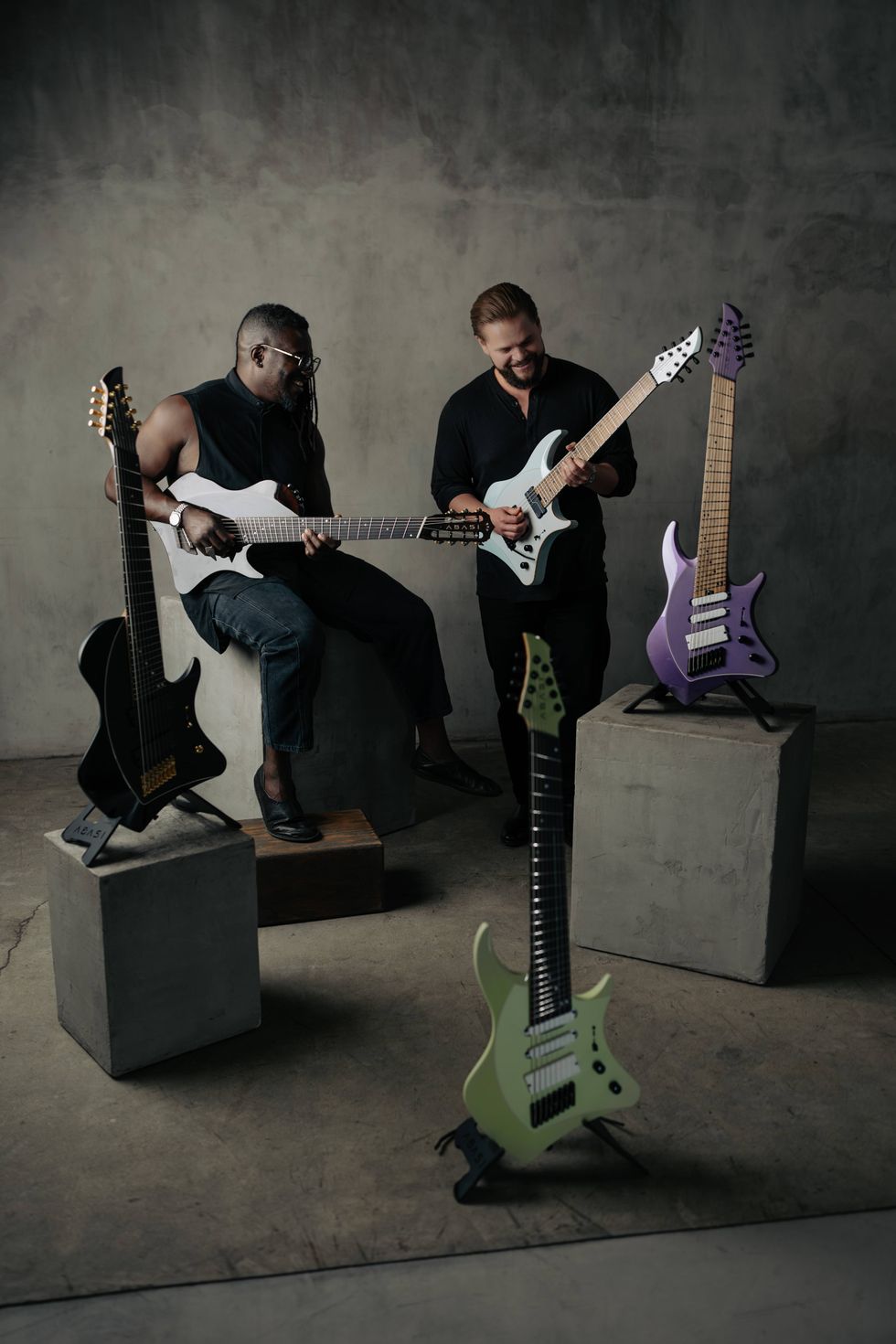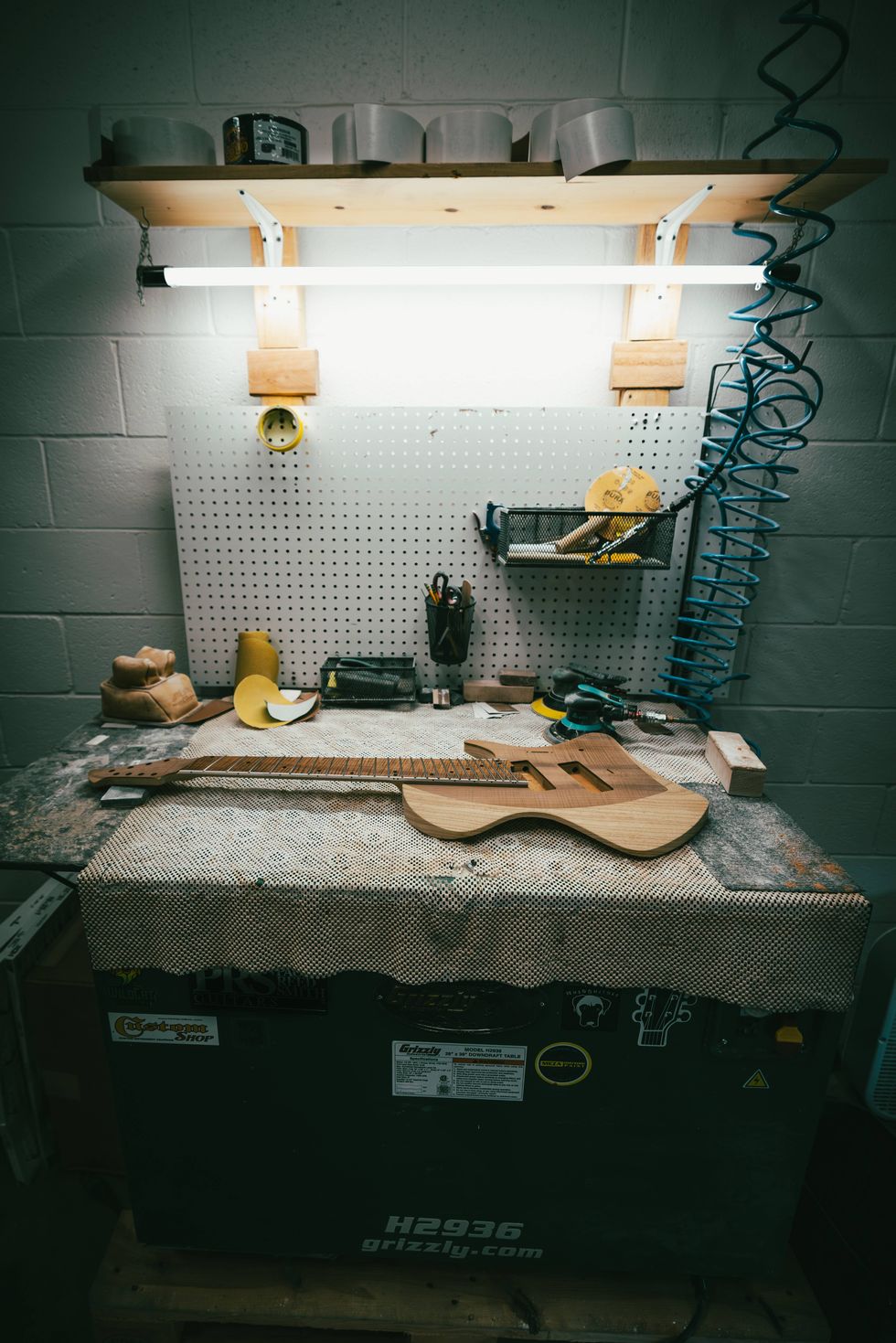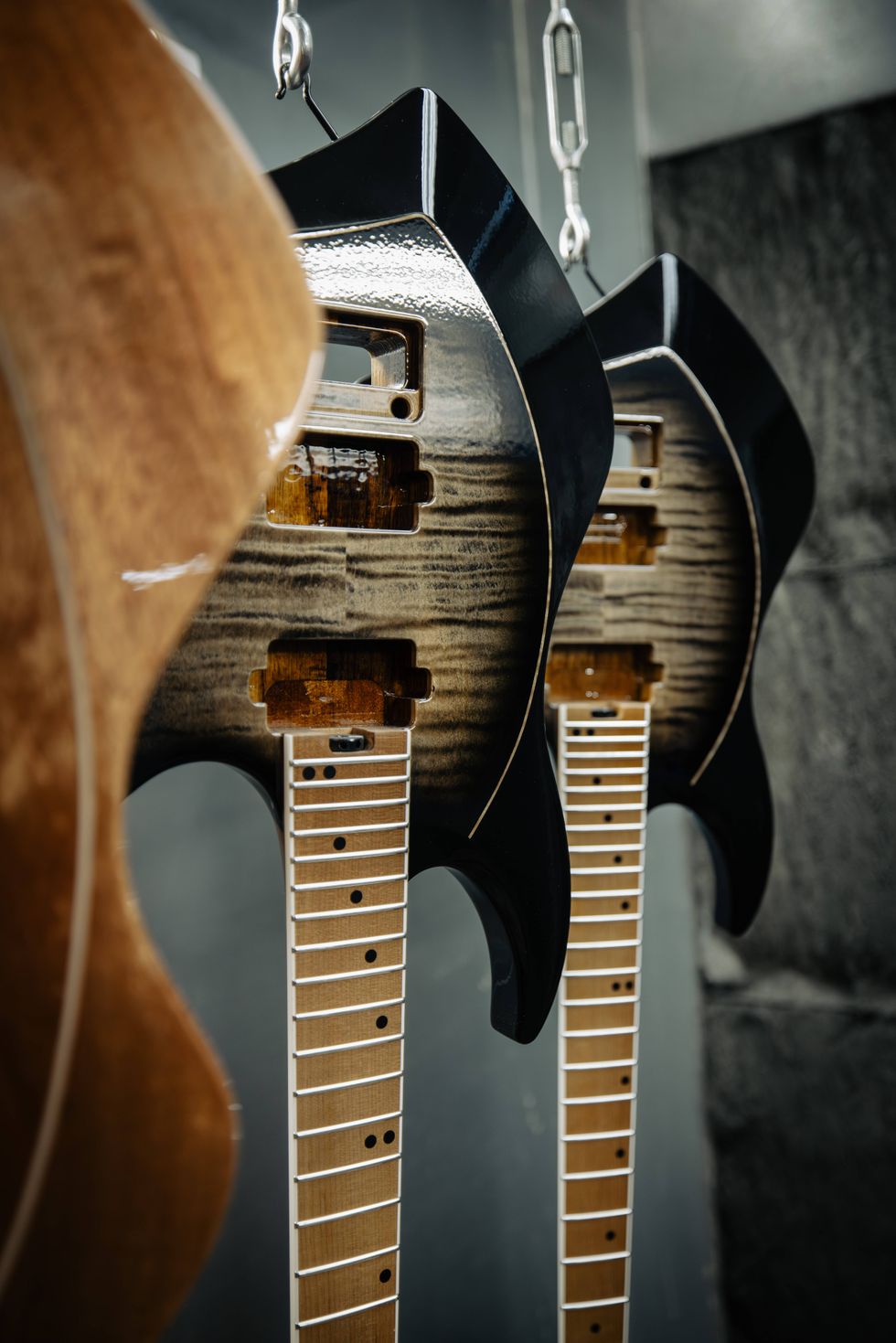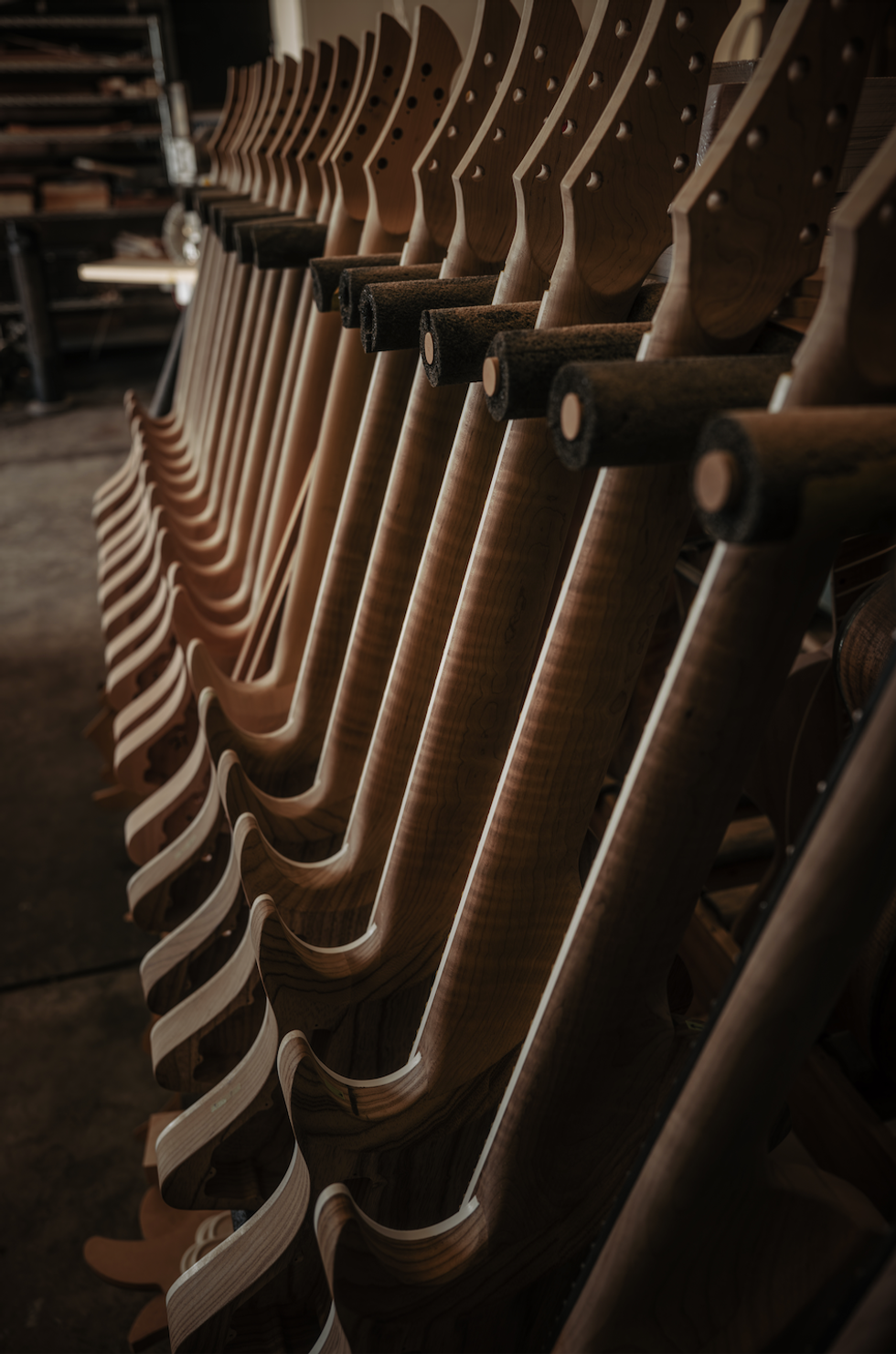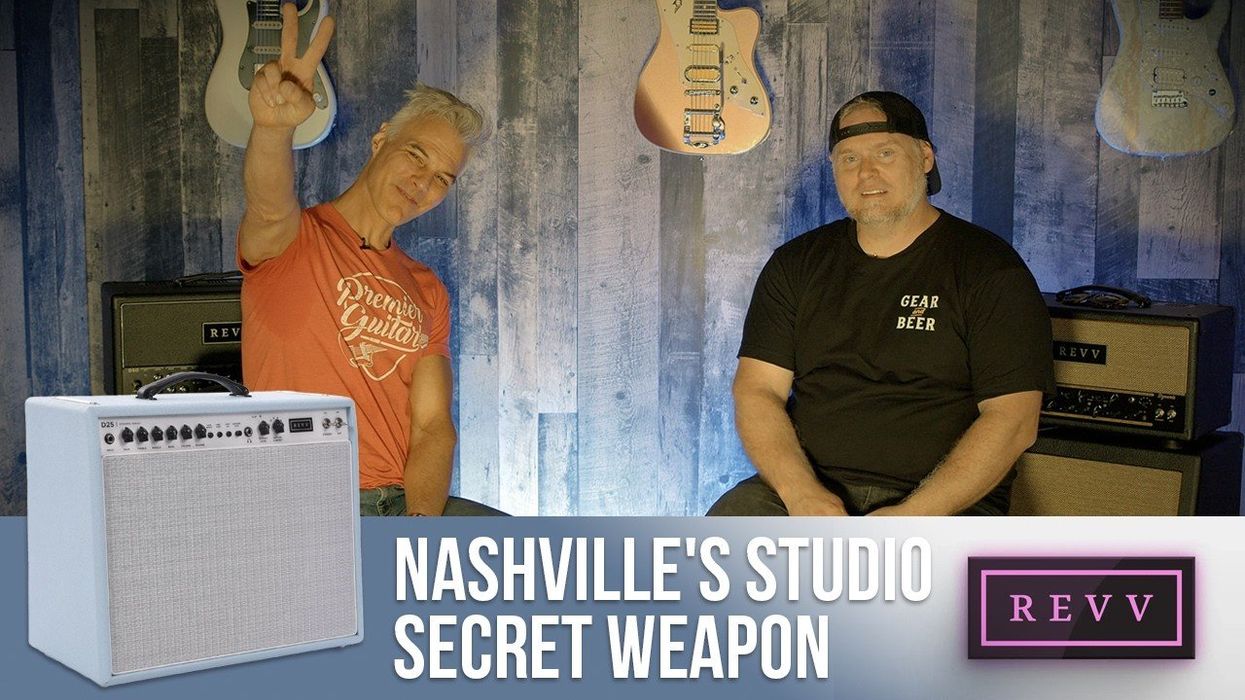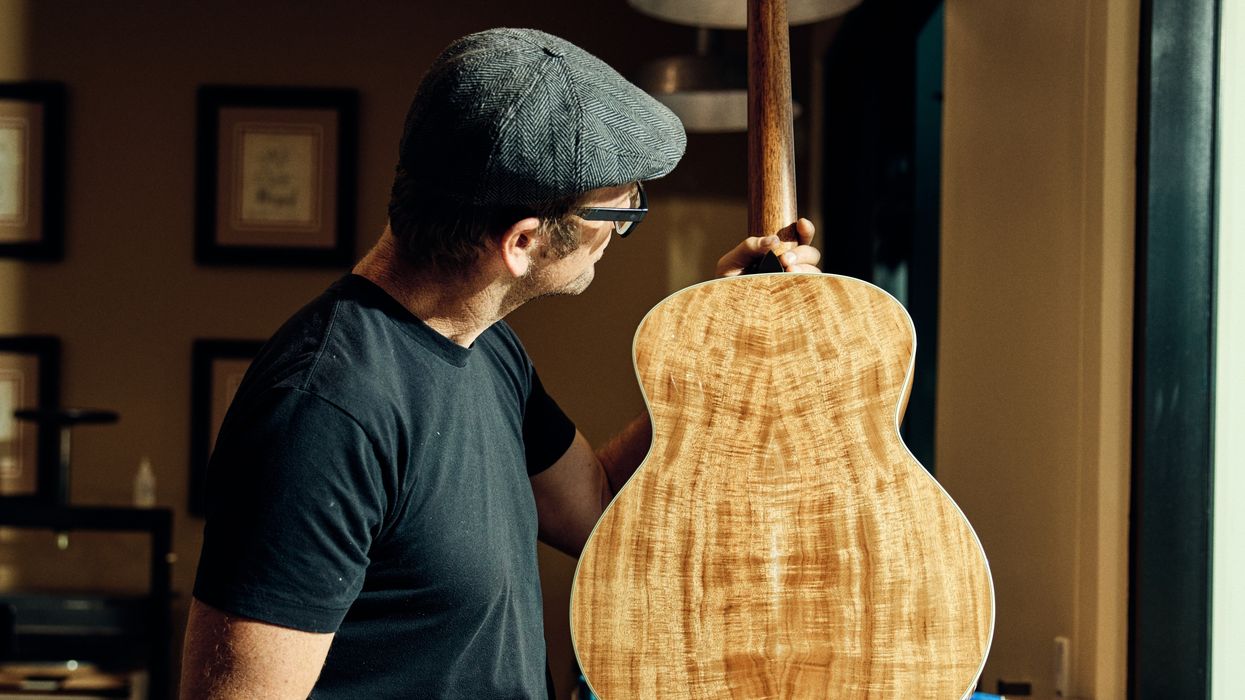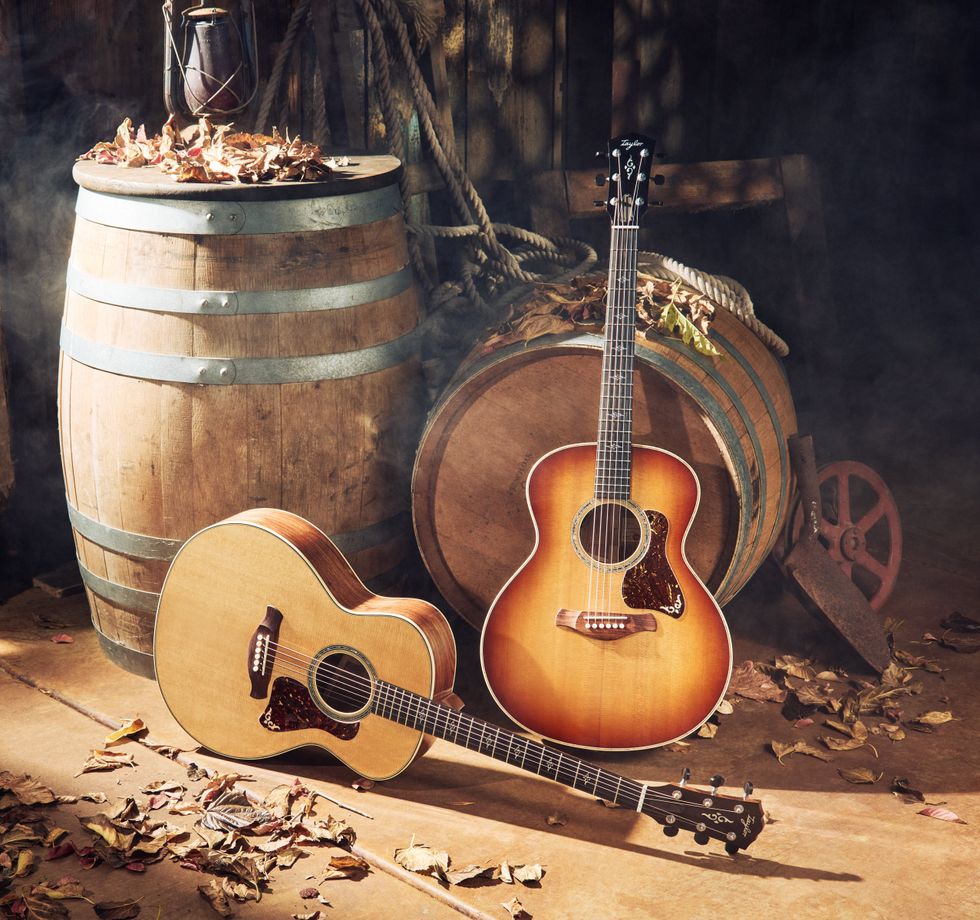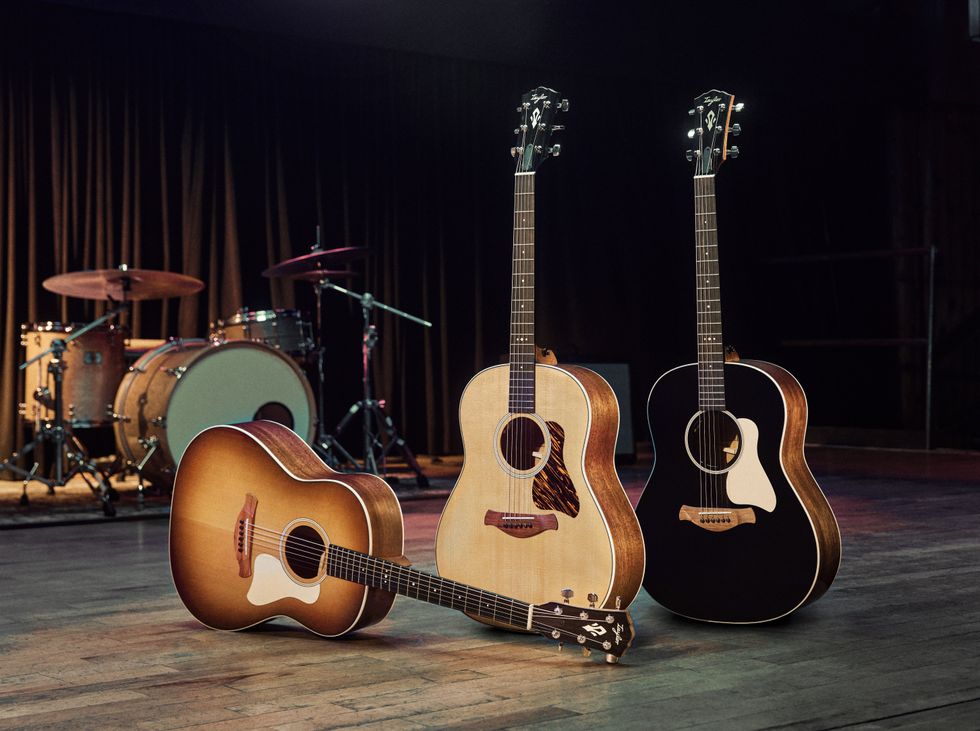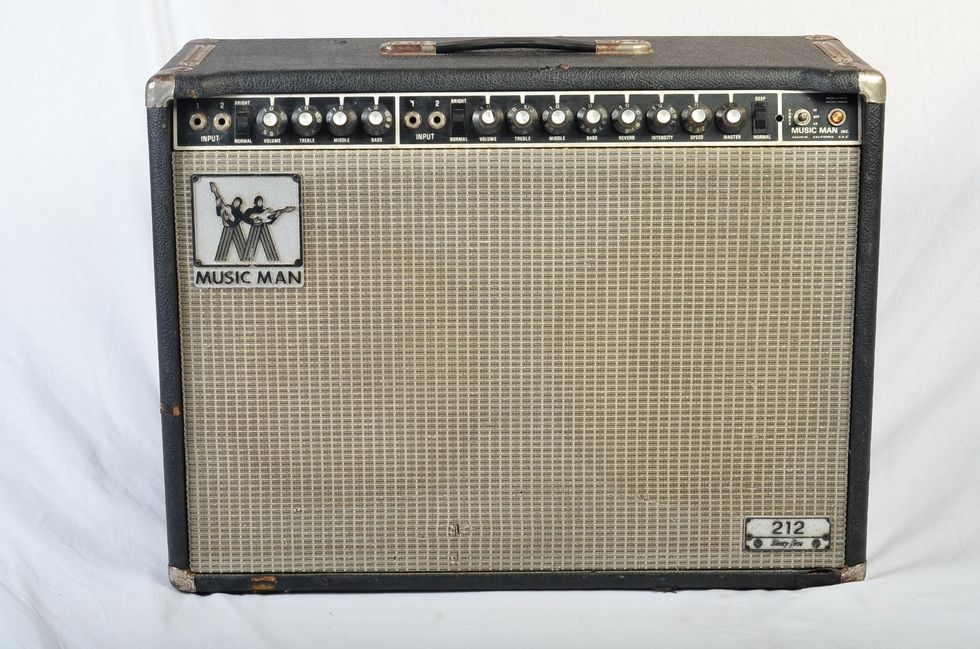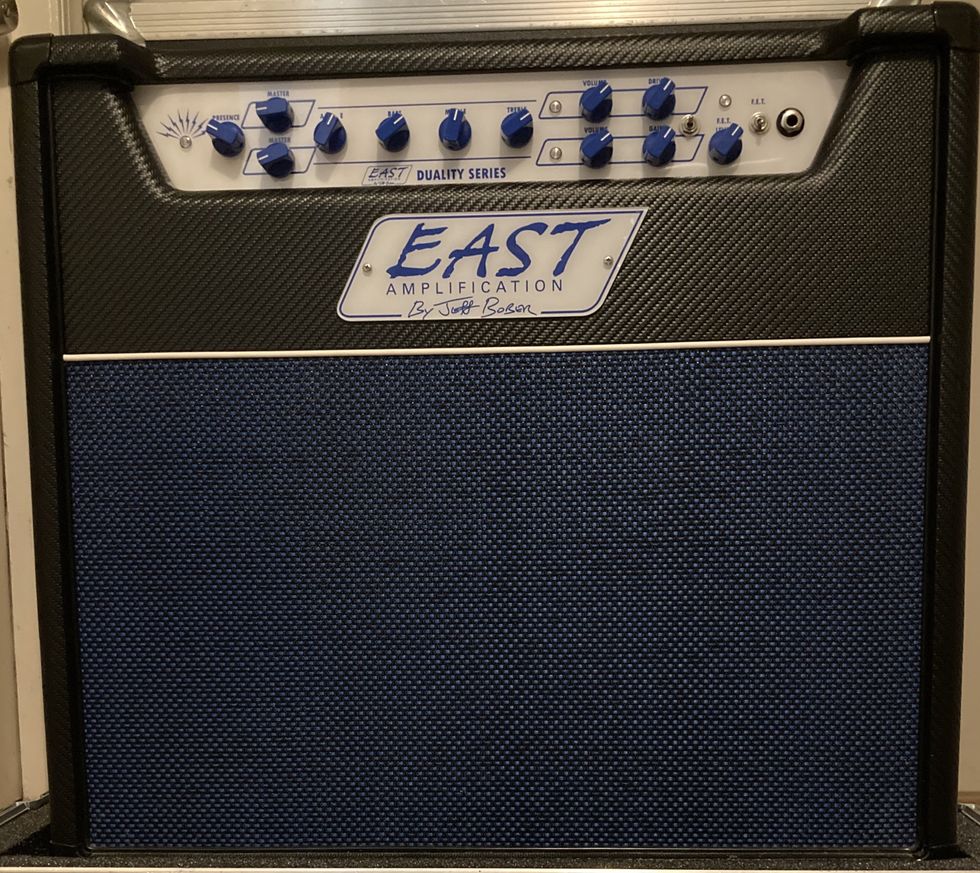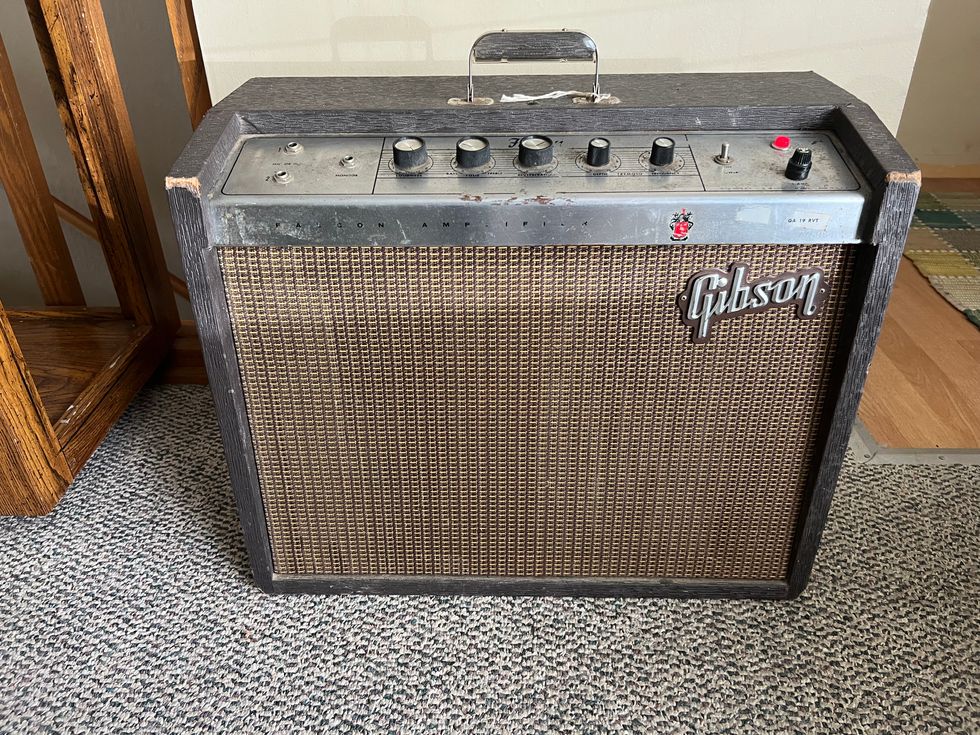Our readers’ tastes have a wide scope, and their pedalboards prove it! From functional rigs meant to tackle gigs of all styles to dreamy stereo boards to a total brand-centric tribute board, this year’s submissions cover a lot of ground. We love to see what everyone has been working on and what kind of gigs you all are getting into! Here are 10 of our favorite submissions:
An Evolving Board for All Gigs

Reader: Eric Kump
I had an overly complicated board with tons of wires and loops, power sucks, controllers, and whatever else you could think of. It was great in three situations: someone else was moving it, I was only able to play at home/studio, or we only ever jammed at my place. Coming back from Covid lockdowns, lugging around a road case lost its luster pretty quick.
I got really into the Eagles back in 2023, and I latched onto everything Don Felder. I saw his board as so minimal, and he could do so much. It was my inspiration: A chorus, a delay, a rotary, two colors of overdrive, and a tuner. It lasted like this until the MXR Joshua was released. I needed an amp-style pedal for my more frequent church requests, which introduced the UAFX Woodrow ’55. I already use the OX Box at certain venues, so this was a no brainer addition.
This all existed until seeing the Bros. Landreth live and dug into Jackson Audio. I found a beautiful chorus (with a rotary option), a new drive, and a compressor I actually enjoy using! So this is both an evolution and a challenge to be able to do a ton with a more minimalist approach.
I’ve done local musicals, festivals, Italian feasts, church services, weddings, pop/country/rock/Christmas shows—this board has been through it all with me. I use it directly into FOH or to a backline (depending on venue size) with a tweed Deluxe, Deluxe Reverb, Princeton Reverb, or Magnatone Varsity Reverb. It might be boring to most, but the last year or so has been a beautiful toned-up journey and exploration into what I want/need most out of what I play!
Here’s what’s on the board: Electro-Harmonix 2020 tuner, Jackson Audio Bloom compressor, Xotic BB Preamp, Jackson Audio Golden Boy Mini overdrive, Jackson Audio New Wave Analog Chorus/Vibrato, MXR Joshua, and UAFX Woodrow ’55.
Name That Wah

Reader: Jeff Jordan
The top board—a homemade board I bought from someone locally for $25 a few years ago—is a duplicate I use at home to practice. It starts with the Outlaw Effects Iron Horse tuner/power supply, which works nicely and is very quiet when operating. Then it goes to the Wampler Ego 76 compressor (the finest compressor pedal, thank you!), the Wampler Triumph as a booster, the EarthQuaker Devices Special Cranker OD with a lower overdrive, Fulltone Full-Drive for a more trebly OD, the 1979 Loco Box Rotophase (my favorite phaser), and the Way Huge Blue Hippo chorus/vibe, mostly used in chorus mode. Then, there’s the Keeley Omni reverb and the Joe Satriani signature Vox Time Machine (my favorite delay).
The bottom pedalboard is more for straight-ahead blues/rock and I sometimes A/B it with the other pedalboards. This board is the Pedaltrain Nano. The tuner is the ModTone MT-PT1 chromatic tuner into the Pigtronix Philosopher’s Tone Germanium Gold Micro compressor; I sometimes use the pedal’s OD for a bit of grit. I generally get my overdrive from the amp, and use the Fulltone Fat-Boost FB-2 for a bit of boost. After that is the classic MXR Phase 90, and then the Keeley Vibe-O-Verb—a lot of ’verb and some vibe. I use the Jordan Gig 2 volume/wah with both boards. I love the richness of the highs of the wah—and that my name is emblazoned on the treadle. I’m the second owner. The original owner bought it new in 1970. Solid as a rock.
Pedal Dreams Do Come True

Reader: Lenin Zacary
It took many years to make the pedalboard of my dreams. Due to lack of money during my beginnings as a musician, acquiring the pedals I wanted was impossible.
My adventure began in the Covid pandemic. Little by little, I was acquiring pedals that I liked. The first was a Walrus Audio Julia. I started with this simply because I liked its limited edition aesthetic, but I really fell in love with its sound. Then, I bought more and more. In 2023, I was finally able to build the pedalboard of my dreams. Several pedals have been left off the table, but this pedalboard has everything I need.
It is focused to play blues, rock, and some fusion. The input of the pedalboard comes from a passive patchbay that is below the reverb, so the signal chain is: Zac Tone fuzz prototype, Origin Effects Limited Edition Cali76, Mythos Argonaut, Sabbadius Tiny-Vibe 69, King Tone Soloist Limited Edition, Friedman BE-OD Blackout Limited Edition, Zac Tone Macumba preamp, Walrus Audio Julia White Gold Flake Limited Edition, Alexander Pedals Rewind, Chase Bliss Gravitas, and Durham Electronics Reddverb. All pedals are powered by a CIOKS 8 Red Limited Edition.
Surf’s Up!

Reader: Mako G
This is my surf guitar rig. It starts with a Boss TU-2, then the Boss OC-5 instantly turns me into 2/3 of a power trio; the Boss BF-2 is used as an organ simulator; the Ibanez TS9 is used as a dirty boost. The SurfyBear provides the essential, classic spring reverb “drip”; I originally got the EHX Oceans 11 to do what the SurfyBear does, but kept it on the board even after getting the SurfyBear because it’s so versatile. Now, I mainly use it for tremolo. The Quilter SuperBlock is basically three classic Fender amps that fit on a pedalboard and can even be powered by a power brick at lower volumes. With the Joyo JP-05 rechargeable power supply, the full rig can be powered without being plugged into a wall at all. (I also use an adapter to turn a cell phone powerbank into a 12-volt source for the Surfybear.)
Wah Skateboard

Reader: Marc Weakland
When I was younger, I lost both my legs from the knees down. I have to play sitting down due to my balance. I can’t flex my artificial foot, so I have my wah horizontal on my board and play it with two feet like a skateboard!
Signal chain: DigiTech Drop, Boss TU-3w, Dunlop Kirk Hammett Cry Baby Wah, Electro-Harmonix Tone Corset, Does It Doom Sabbathi Fuzz, TC Electronic Spark Mini, TC Electronic Eyemaster, Wampler Dracarys, Wampler Ratsbane, Catalinbread Sabbra Cadabra, Boss NS-2, TC Electronic Dreamscape, MXR Phase 90, Ernie Ball Tap Tempo, Electro-Harmonix Canyon Delay.
Stereo Sounds

Reader: Nathan Finley
I decided to hold nothing back with this board. I soldered all power cables to length and soldered all patch cables with Mogami 2319 and SquarePlugs (straight and pancake). I wanted a board that would handle all modulation duties with focus on the Keeley I Get Around Rotary Simulator and the Boss RE-202 Space Echo as the main stars. The Phase 90 pre-drive section really lets me keep things versatile along with two Line 6 HX Ones with preset switching and tap tempo/sync (for RE-202 and HX Ones) made possible via MIDI from the Disaster Area Designs micro.clock Gen4. Meanwhile, the Goodwood Audio Audition allows me to insert any pedal after the TS9 and before the Keeley I Get Around, just in case I missed something. All this is powered cleanly by the Walrus Canvas Power 15. I play classic rock mainly but have no issues getting the tones I need for just about any genre. Special thanks to all vendors and manufacturers seen on this board for the customer support in answering all of my questions and playing through scenarios. The board is a Creation Music Company 24x16 Flat Series with a custom 13" riser.
Signal chain: Goodwood Audio TX Interfacer, Korg Pitchblack Tuner, UAFX Cali76 Compressor, King Tone miniFuzz V2, MXR CAE Wah, EHX EVH90 Phase 90, J. Rockett Archer, Greer Lightspeed, Ibanez TS9, Goodwood Audition (insert), Keeley I Get Around Rotary (stereo out), Line 6 HX One (1) (stereo in/out), Line 6 HX One (2) (stereo in/out), Boss RE-202 Space Echo (stereo in/out), Disaster Area Designs micro.clock Gen4 to both HX Ones and RE-202, Goodwood Interfacer (stereo in/out to Dr. Z Z Wreck Jr. [left] and Fender ’68 Custom Pro Reverb [right]).
Keeley Super Fan

Reader: Roger Williams
Keeley is my favorite builder. He recently started a new line of pedals with new enclosures. All the dirts are 2-in-1 combination pedals with 4 options each. There are distortions, fuzzes, and overdrives, and you can mix-and-match gain and tone stacks in each. The new Halo delay and Zoma reverb are simplified versions of their original Halo and original Hydra pedals, but upgraded and with the best options from each. Some say I'm a Keeley fan boy, and they would be correct.
Signal chain: Fulltone Deja’Vibe, Keeley Noble Screamer, Octa-Psi, Super Rodent, Blues Disorder, Muse Driver, Angry Orange, Halo delay, Zoma reverb.
No Tap Dancing

Reader: Steve Snider
The switcher is the key to a great gig. As a singer, I can’t tap dance and put on a good show, so the switcher keeps all my on/off pedals right in front, and if a cable fails, my whole rig doesn’t go down.
Signal chain: Ernie Ball VP Jr., TC Electronic Polytune (always on), Xotic EP Booster, into the switcher, which controls (in order) the EHX Micro POG, JHS Bender, MXR Phase 90, JHS Morning Glory, Behringer TO800 Vintage Tube Overdrive, Ashland EF-DL analog delay, EHX Oceans 11. Switcher goes out to a UAFX Ruby ’63, to Horizon Straightline DI.
You Really Can Do It All


Reader: Thomas de la Perrelle
The GigRig G3 is really the powerhouse of the board, making it all possible. It allowed me to build the board in two tiers, while keeping everything user friendly.
I designed the pedalboard myself and got it laser cut at a local manufacturer from 12 mm plywood. The board assembly went beautifully. After about a month of soldering cables, it came together just as planned.
Most of the cables are hidden under a small false floor on the bottom layer which keeps the labelling neat and tidy, although troubleshooting can be a little tricky.
The board sounds fantastic. The signal clarity is excellent due to the G3, especially for such a large pedalboard. Beyond that, the board covers all the sounds I could possibly want, and I'll never get tired of Memory Lanes in stereo.
My pedalboard is my dream recording “do-it-all” board, controlled via the G3 switcher. I mainly play pop, indie, and rock music, so this was built with the intention of having a variety of gain stages and a powerful modulation/delay section. I run the pedals in stereo or wet-dry with a Vox AC30 and a Dr. Z Route 66. The pedalboard is perfect for everything from punchy drives to atmospheric soundscapes to juicy fuzz tones.
Signal chain: Analog Man Beano Boost, Williams Supa Fuzz, Effectrode Blackbird preamp, Kingsley Harlot, A/DA Flanger, Fulltone Deja’Vibe MkII, Moog Moogerfooger MF103 12-Stage Phaser, Diamond Memory Lane 2 analog delay (x2), Empress ZOIA, Chase Bliss CXM 1978, all powered by a combination of an Eventide PowerMax and a variety of GigRig Power Adapters.
’80s Vibes

Reader: Paul Borovay
I love my board. I play a lot of ’80s-inspired chorus-y/double-track-y types of music, and this board just lets me explore so many types of sound. It starts with the Sonic Research Turbo Tuner ST-200 into the DigiTech Drop, and moves into the drive sculpting with the Paul Cochrane Timmy 15th Anniversary V3, into the Klon KTR, into the ClinchFX EP+, then into the effects loop of the Boss IR-2, and out to the stereo Analog Man Mini Chorus. I run stereo from there, into the Hologram Chroma Console (the Hotone Ampero Control gives me four presets), then into the Empress Echosystem Delay, and back into the IR-2. I have the IR-2 set to a Twin Reverb and a Vox AC30. You can hear what it sounds like in my one-man band, Alert the Cats.


